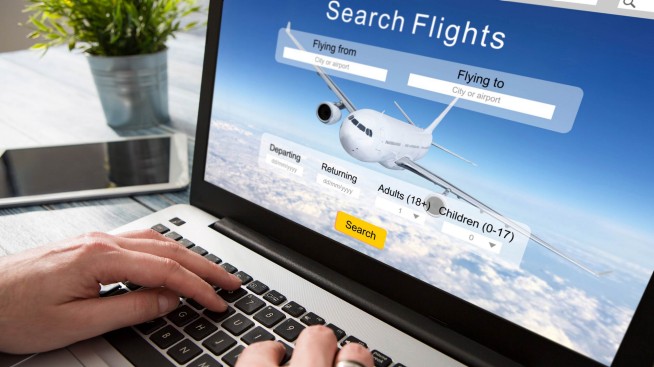Everything you need to know about passports

If you're thinking of traveling internationally, you may want to start looking at getting a passport. A passport is a form of identification issued by the federal government that allows you to gain entrance to (most) other countries. It also provides a way to track where U.S. citizens are traveling to and when. Acquiring a passport can be a simple process that will truly make the world your oyster!
Benefits of having a passport
International travel is often people's first reason for getting a passport — most countries require a valid passport to enter. But whether you have an international trip planned or not, it may be a good idea to have an up-to-date passport on-hand. You never know when your job, friend or family member may offer an opportunity for last-minute travel, so it's nice to be prepared.
Additionally, a passport is a complete form of ID. For instance, if you're getting a new driver's license, instead of bringing both your birth certificate and social security card you can just use your passport. The same may also apply when you're completing administrative documents for a new job.
If it's your first time getting a passport, you may have a few questions about how to get a passport. Below the process is broken down step by step.
How to get a passport
Getting a passport for the first time can seem overwhelming, but if you take it one step at a time, you'll find it's not a complicated process.
What you need to get a passport
To start, to get a United States passport you need to be a U.S. citizen by birth or naturalization, or be a U.S. national. Naturalization is the process by which people not born in the U.S. become American citizens by choice, and U.S. nationals are people who were born in American Samoa, Swains Island or the U.S. Minor Outlying Islands.
To start the application process, you'll need a few different documents:
- U.S. passport application
- Proof of citizenship document
- Photo ID Photocopy of the citizenship document and photo ID
- Passport photo
- Payment (check or money order)
The U.S. passport application can be found online on the State Department's website. You can either fill it out electronically or by hand, but either way it needs to be printed out.
A proof of citizenship document for those born in the United States is a birth certificate that was issued by the city, county or state where you were born, has your full name and your parent or parents' full names on it, has your date of birth and place of birth on it, has the signature of a registrar, the date filed with the registrar and the seal of the issuing authority.
If you were born outside the U.S., you'll need to submit your consular report of birth abroad or certification of birth, as well as your certificates of naturalization and citizenship.
Passport photos can technically be taken by yourself, but there are quite a few requirements for an acceptable photo. Most pharmacies, shipping centers, department stores and post offices can take a picture that meets passport photo requirements.
How to apply for a passport
When applying for a passport, you can either follow the regular application process, or you can pay extra for an expedited process if you need your passport sooner than the standard lead time.
If you're going the regular route, you can bring the above documents to a designated passport acceptance facility. A complete list of facilities near you can be found on the State Department's website, but it generally includes post offices, clerks of court, public libraries and other municipal government offices.
If you need to expediate the process, you can let the person you talk to at the passport acceptance facility know. There is no guarantee you'll have your passport when you need it, as processing times fluctuate throughout the year.
How much does a passport cost?
Once you have all your paperwork gathered and you've started budgeting for your first international trip, you may be wondering: How much does a passport cost?
Passport costs vary depending on a few different things. For instance, an expedited passport costs about $60 more than a regular passport. There are also two types of passports and whether you opt for a passport book, a passport card, or both will also affect price.
A passport card is less expensive than a passport book, but it is not valid for international air travel. A passport card can only be used for travel by land and sea to Canada, Mexico, Bermuda and the Caribbean.
- Passport book for adults: $130
- Passport card for adults: $30
- Book and card for adults: $160
- Passport book for minors: $100
- Passport card for minors: $15
- Book and card for minors: $115
If the passport costs are higher than you expect, keep in mind that passports issued to anyone 16 and older are good for 10 years. For anyone under 16, passports are good for five years.
How long it takes to get a passport
Unfortunately, there's no way to say exactly how long getting a passport will take. Processing times will fluctuate throughout the year depending on demand and staffing. However, there is a general rule of thumb to consider. If you don't need your passport for eight or more weeks, the standard process will be fine. If you need a passport sooner than eight weeks, you will likely want to pay the extra fee for the expedited process.
The expedited process costs an extra $60. You can tell the person you work with at the passport acceptance facility that you need to expedite the process and they will mark your paperwork and charge the extra fee.
Generally, it's probably a good idea to give yourself more time than you need to get your passport, just to be safe.
How to renew a passport
So now that you know how to get a passport, and you know that it lasts for 10 years, you may want to learn how to renew a passport. You may wish to start the renewal process around nine months before your current passport expires. This is because some countries won't allow you entry if your passport expires within six months.
There are five criteria that need to be met if you wish to renew your passport online or by mail:
- You have your passport in your possession to submit with your application.
- Your passport is undamaged aside from normal wear and tear.
- Your passport was issued to you when you were 16 or older.
- Your passport was issued within the last 15 years.
- Your passport was issued in your current name or you can provide documentation of your name change.
If you are applying by mail, you will have to send in the following documents:
- Passport renewal form
- Name change documents if applicable
- Your most recent passport
- A new photo
- Payment (check or money order)
If you do not meet the above criteria, you'll need to apply in person. If that's the case, make sure to bring the following with you:
- Passport renewal form
- Evidence of U.S. citizenship (expired passport is fine)
- Current ID
- New photo
- Payment
What's more
Looking at lists of paperwork and fees can feel overwhelming if you're applying for a passport for the first time. However, if you give yourself plenty of time and take it one step at a time, you'll be able to get your passport for your next trip. And if you need a little bit of extra motivation, start looking at some bucket list spots you can visit once you have your passport in hand!



